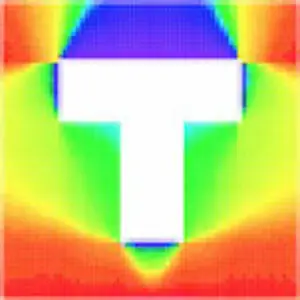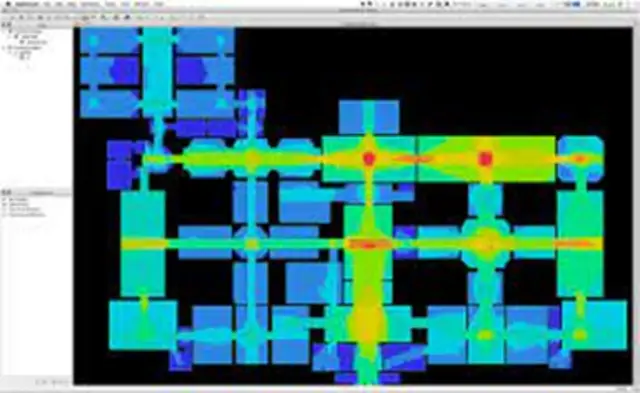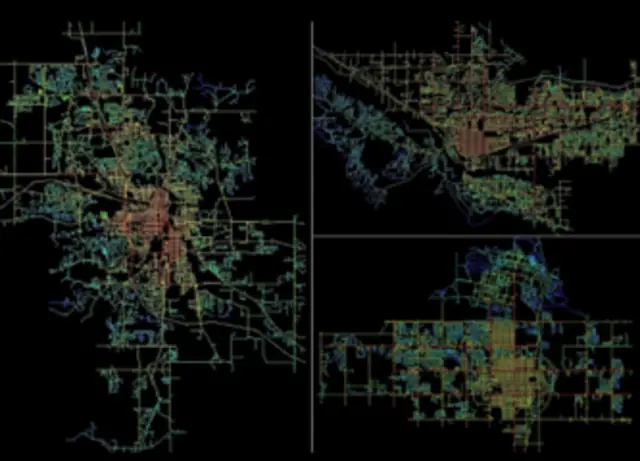Introduction:
In any sector, with growing complexity there comes a need for visualization of the data on a different scale. To visually analyze the data DepthmapX has been created along with various representations for components of space.
DepthmapX is an open-source and multi-platform spatial evaluation software program for spatial networks of various scales. The software program was originally developed through Alasdair Turner from the Space Syntax organization as DepthmapX, now open-source and to be had as DepthmapX.
What is DepthmapX:
DepthmapX is a distinct software program platform to carry out a fixed of spatial network analyses designed to apprehend social tactics in the built atmosphere. It functions at quite a few scales from making via small cities to entire towns or regions. At every scale, the goal of the software program is to supply a map of open area elements and join them through a few relationships (for example, intervisibility or overlap) after which carry out a graph evaluation of the resulting network. The objective of the inference is to derive variables that can also furthermore have societal or pragmatic implications [1].

Source 1: [2]
History of Developing DepthmapX:
DepthmapX was created by grouping two opinions including Isovist Analysis by Benedikt [3], and Space Syntax by Hillier and Hanson [4]. Where Benedikt made the maps by the assets of visual fields of a plan, Hillier and Hanson created the demonstration of the elements of space in the concept of space syntax.
Benedikt drew contours of identical visible places inside the plan and referred to as the ensuing map an ‘isovist field’. He believed that those maps might supply perception into how humans navigate the actual building. Since intently packed contours might suggest an unexpectedly changing field of vision, he reasoned that those might suggest selection factors inside the building.
Hillier and Hanson created numerous representations for the components of space; they then drew maps of those components, and crucially, the relationships of the components with every other [5].
Use of DepthmapX:
DepthmapX is a unique software program platform to carry out a fixed of spatial network analyses designed to recognize social approaches inside the built environment. It works at quite a few scales from building via small cities to entire towns or regions [6]. At every scale, the purpose of the software program is to supply a map of open area elements and join them through a few relationships (for example, intervisibility or overlap) after which carry out graph evaluation of the ensuing network. The goal of the estimation is to develop variables that may also furthermore have social or experiential implications [7].

Figure 1: Visual Representation by DepthmapX
Source 2: [8]
For Visual Analysis:
At the building or small city scale, DepthmapX may be used to evaluate the visible accessibility of an area in some ways [8] [9]. Isovists are the core element at the back of Visibility Graph Analysis (VGA), performing as the joining mechanism that converts a dense grid to a graph of intervisible points (a visibility graph), which may also then be analyzed the usage of numerous graph measures. DepthmapX offers local measures of visibility which include the isovist region and perimeter however additionally international ones quantify building traversal and area centrality.
Agent analysis:
DepthmapX permits for simulating one-of-a-kind varieties of pedestrian behaviour by offering numerous approaches for an agent to pick out wherein to walk, including toward large spaces, lengthy traces of sight, or components in their view which are occluded. The paths of the dealers and their numbers passing via gates may be counted in comparison to the real behaviour of pedestrians passing thru gates.
Axial and segment analysis:
At the small to medium city scale, DepthmapX may be used to derive an axial map of a layout. This method may derive a discounted straight-line community of the open area in an environment [10]. The axial map has been an important thing evaluation approach in area syntax studies for lots of years, however, its mathematical derivation of it is novel.
DepthmapX helps to visually analyze the data and it is very important to visualize data spatially for urban planners.
Firstly, it helps to understand the transport network based on the traffic volume count. With the help of Axial Line Theory (ALT) or Unit Segment Theory (UST) along with the data of traffic volume count, one can easily detect the traffic density of a road network along with the accessibility of places.
Secondly, DepthmapX helps to create an axial line that is the line from 2 different points without any interruption in between. So, it helps to localize or locate the most visible spot in an area or network. It helps urban planners to understand the importance of a place and according to that, they can assign the land use or any landmark.
Next, it helps to create the relation between the built environment and the relation of the crime in a particular area. DepthmapX not only shows the most visible places of an area but also detects the blind spots. And we can understand the existence of any relationship between the crime zones and the blind spots so, it indirectly helps to create a relation between the built environment and crime rate detection.
Making a road network to an urban sprawl area helps a lot. Urban planners can make the different layouts of road networks based on different parameters and by running the DepthmapX software they can understand which is going to be a more accessible network by the sprawling area and core area as well.
Also Read: Data Visualization Techniques | Importance, Tools & Software
DepthmapX V/S Other Similar Software:
DepthmapX can be compared with different software such as ArcGIS or QGIS, AutoCAD, SketchUp, Geoda, etc. But for visualizing the data with help of axial maps, DepthmapX is the best.
ArcGIS or QGIS can be used for visualizing vector or raster datasets. It can help to understand the pattern of the settlement by using different colour codes or understanding the different hierarchy of network etc. But can’t help to find out the most accessible area or most visible area.
Similarly, in AutoCAD, we can draft the network and other plans, but we can visualize the data that which areas are the blind spots. And by sketch up, no analysis can be done as it is just a model-making software.
So for visualizing data in terms of space syntax, we have to use DepthmapX.
Impact of DepthmapX:
The software covers two distinct models for spatial analysis: the Space Syntax model and the Agent model [11]. These two models are hypothetically diverse in spite of the fact that they agree on the principal connection between space and society. They start from distinctive depictions, and they diverge at the point of modeling. The agent model represents an emergent process that leads to forming aggregate patterns of social activity. Through its ability to display movement data in relation to aggregate patterns of agents, Depthmap’s agents have proven to be an effective tool to simulate natural movement [12].

Figure 2: Visualisation of Map by DepthmapX
Source 3: [5] [13]
Space Syntax builds on a synchronic change or reduction of spatial relationships withinside the built atmosphere [10]. Mapping this discount into networks of longest and fewest lines, Depthmap’s axial and phase breakdowns are convincing strategies for predicting to-motion and through-movement in cities. On the dimensions of buildings, spatial evaluation of the use of DepthmapX can strain relational systems that deliver how social groups occupy spaces. DepthmapX is a platform that brings collectively those fashions to be examined in an analytical approach. It additionally gives experimental and developer approaches [1] [7] [10].
The plans to make this software program an open-source platform together with the continuing method of understanding dissemination coordinated with Space Syntax LTD. will assist adapt this software program to house one-of-a-kind kinds of usage. It will permit for personalizing the software program to suit sure expectations. It will even permit the combination of this software program with different GIS and CAD packages, making it a part of a much broader network of planners, geographers, and designers [3].
Also Read: Benefits of 3D modelling in Urban Planning
FAQs:
1. What is DepthmapX?
DepthmapX is an open-source and multi-platform spatial evaluation software program for spatial networks of various scales
2. Who developed DepthmapX?
The software was developed by Alasdair Turner.
3. What is the axial map?
The axial map is built with the aid of using taking an accurate map and drawing a hard and fast of intersecting traces thru all of the areas of the city grid in order that the grid is included, and all rings of movement are completed.
4. What is Space Syntax theory?
Space Syntax is a hard and fast of theories and strategies for modeling and reading cities, the use of area because of the essential generator of the city. A principal distinctive feature of this technique is that its miles are supported with the aid of using an effective social principle of area.
5. What is supposed with the aid of using spatial configuration?
In landscape ecology, spatial configuration describes the spatial sample of patches in a panorama.
6. What is area syntax evaluation?
Space syntax is a hard and fast of strategies for the evaluation of spatial configurations of all kinds, particularly wherein spatial configuration appears to be a huge thing of human affairs, as it’s miles in homes and cities.
7. What is area syntax in city design?
Space Syntax is a set of theories and strategies for modeling and reading cities, the use of area because of the essential generator of the city.
8. What is integration in area syntax?
Integration is a normalized degree of distance from any area of starting place to all others in a system. In general, it calculates how near the starting place area is to all different areas, and may be visible because of the degree of relative asymmetry (or relative depth).
Conclusion:
Recent improvement efforts have led to an alternative ‘command-line’ interface that lets in for automating the guidance and evaluation of spatial networks with minimum consumer interaction [6] [8]. With this new interface, the evaluation of a couple of distinct initiatives may be performed unattended and without the want to have the graphical person interface open. In this shape DepthmapX will also be embedded in initiatives the use of different programming languages along with R and python, permitting them to harness the numerous styles of evaluation in extra complicated applications.
References:
- “depthmapX,” 06 December 2016. [Online]. Available: https://www.ucl.ac.uk/bartlett/architecture/research-projects/2016/Dec/depthmapX.
- T. Varoudis, “varoudis,” [Online]. Available: https://github.com/varoudis.
- M. Benedikt, “To take hold of space: Isovists and isovist fields,” Environment and Planning B: Planning and Design, vol. 6, no. 1, pp. 47 – 65, 1979.
- J. Hanson and B. Hillier, “The Social Logic of Space,” Cambridge University Press, 1984.
- A. Paul, “Axial Analysis: A Syntactic Approach to Movement Network Modeling,” Institute of Town Planners, India Journal, vol. 8, no. 1, pp. 29 – 40, 2011.
- “depthmapX development team,” depthmapX (Version 0.8.0), 2020. [Online]. Available: https://github.com/SpaceGroupUCL/depthmapX/.
- C. Ratti, “A critique of space syntax,” Environment and Planning B: Planning and Design, vol. 31, 2004.
- J. Bij and L. Xintao, “Defining and Generating Axial Lines from Street Center Lines for better Understanding of Urban Morphologies,” 2011.
- Penn and A. Turner, “Space syntax based agent models,” Pedestrian and Evacuation Dynamics, pp. 99 – 114, 2002.
- A. Turner, “Depthmap 4 — A Researcher’s Handbook,” pp. 1 – 52, 2004.
- D. O’Sullivan and A. Turner, “Visibility graphs and landscape visibility analysis,” International Journal of Geographical Information Systems, vol. 15, no. 3, pp. 221 – 237, 2001.
- M. de Arruda Campos and P. Fong, “Bending the axial line: Smoothly continuous road centre-line segments as a basis for road network analysis,” in Proceedings of the 4th International Symposium on Space Syntax , UCL, London, UK, 2003.
- Author, 2022.